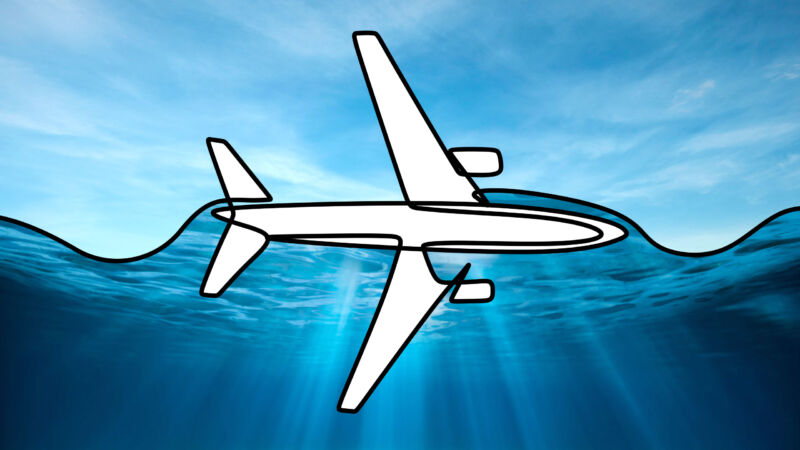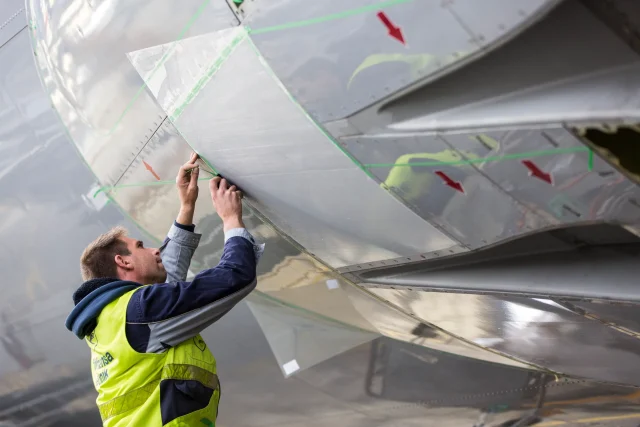
Aurich Lawson | Getty Images
Companies are often caught between wanting to cut emissions but also grow profits. But for airlines, these two different imperatives actually align. Cutting carbon emissions means burning less fuel and spending less money buying fuel. This is why Lufthansa has been copying a trick from the animal kingdom: applying a special film that mimics sharkskin to parts of its aircraft.
When it comes to decarbonization, reducing the emissions of air travel is both a high priority and something of a difficult task. Globally, air traffic accounts for about 2.5 percent of carbon emissions, but since those emissions are emitted at altitude, studies have found that the warming effect may be almost twice as large.
The problem is that it’s extremely difficult to rival the energy density of jet fuel, which contains almost 50 times as many megajoules per pound (or kilogram) than alternatives like hydrogen, ethanol, or lithium-ion batteries. That’s less of a problem for ground or sea transportation, where weight is less important, but it’s a real stumbling block for switching jet airliners to a different fuel source.
Synthetic carbon fuels are obviously of great interest to the aviation sector, but they have their own problems—biofuels can divert cropland away from feeding humans, and the direct air capture of carbon dioxide to turn it into methane (and then more complex hydrocarbon fuels) is massively energy intensive and extremely expensive, costing perhaps five times as much as oil extracted from underground. And we’re yet to see direct air capture working at a proper industrial scale, either.
Sharkskin isn’t a magic fix
Lufthansa will fit four Boeing 777-200ER aircraft (operated by Austrian Airlines) with the shark skin technology, joining 17 other airframes (a Lufthansa Boeing 747-400, 12 Swiss Boeing 777-200ERs, and four Lufthansa Cargo Boeing 777Fs), which already feature the film.
Nearly 9,000 square feet (830 m2) of the planes’ surface—along the fuselage and also the engine nacelles—will be covered with sheets of AeroSHARK film, which mimics the scales on actual sharkskin with 50-micron-thick riblets that reduce friction by minimizing the turbulent boundary layer.

Lufthansa
In sharks, it’s calculated this equates to about a 10 percent reduction in drag versus smooth skin, and using this approach has helped Olympic swimmers cut through the water more easily. But that’s for swimming through water; the effect on a plane traveling through the air is more modest, but it should still cut fuel by around 1 percent per flight. (For a longer explanation of how this works, check out this coverage from Ars Senior Reporter Jennifer Oullette from last week.)
“We take our responsibility seriously and take every possible step to reduce CO2 emissions within our flight operations. At one percent, the sharkskin’s efficiency potential may not sound like much, but in total it will save thousands of tons of CO2 per year on long-haul flights,” said Austrian Airlines COO Francesco Sciortino. “Even though our Boeing 777-200ERs are in their final years of service, we take this investment to get one step closer to our CO₂ reduction targets.”
Lufthansa says the upgrades should be complete by March next year.





















+ There are no comments
Add yours